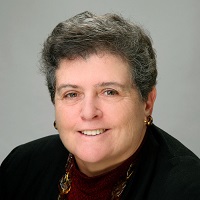What’s the Key to a Secure Retirement?
The answer is long-term planning, but if you, like so many other retirees and others approaching retirement, have planning gaps, here’s what you can do.


By the time a person approaches retirement age, they have enough life experience to know that change and the unexpected are, well, expected. On the other hand, human beings also tend to focus on what’s right in front of them, and retirees and those approaching retirement are no different.
Studies have found that many people at or near retirement age have major gaps in their planning, making them vulnerable to financial problems in retirement.
Misperceptions put retirement nest eggs at risk
A result of gaps in knowledge and failure to think about the long term is a focus on cash flows and expected bills and not on unexpected events. The SOA Research Institute has studied shocks in retirement, and it found that retirees are resilient and able to deal effectively with many of them, but not all.

Sign up for Kiplinger’s Free E-Newsletters
Profit and prosper with the best of expert advice on investing, taxes, retirement, personal finance and more - straight to your e-mail.
Profit and prosper with the best of expert advice - straight to your e-mail.
Specifically, the shocks that were more likely to cause them to suffer financial hardships include experiencing a major medical event that requires a long period of care with paid caregivers, relocating to assisted living or a nursing home and getting divorced during retirement. Retirees who experience one of these three events often run out of assets.
Those focusing on an average life expectancy are also vulnerable because an “average” means many people will live beyond it. This, together with short-term planning, means many retirees do not think about very old age.
For people nearing retirement age, there are two important first steps:
- Don’t retire too early. The earlier one retires, the more money is needed to live to the end of retirement, and the earlier one claims Social Security, the lower the monthly benefit will be. Social Security benefits can be claimed as early as age 62, and the monthly amount continues to increase based on claiming age up to age 70. The monthly income at age 70 is about 75% higher than at age 62.
- Plan for the long term. That sounds obvious, but research consistently shows that retirees seem to plan more for the short term, making it unlikely they will anticipate shocks and leaving them unprepared for anything outside their regular expenses.
Don’t forget about long-term risks
Consistently, the SOA Research Institute’s Retirement Risk Surveys have found that the top three risks that concern respondents include inflation, health care costs and long-term care costs. There is less concern about outliving assets, probably because longevity is a long-term risk. For many individuals, Social Security is their biggest retirement income, and that continues for life. However, their assets beyond these benefits may not last as long.
Based on these findings, below is my advice to retirees and near-retirees with significant savings for building a secure retirement for the long term:
- Develop and implement a plan for income payout for life
- Capitalize on the way Social Security works and, for most people, consider later claiming
- Work longer and retire later if there are not enough retirement assets
- See if expenses can be reduced as an option if there are not enough assets
- Don't forget about providing for health care and long-term care risks
Here is additional advice specifically for couples:
- Develop plans that will work for both the retired couple and the surviving individual who will experience retirement on their own
- Consider the joint situation of the couple when claiming Social Security: For some, the best option is late claiming for the higher earner and earlier claiming for the other
The SOA Research Institute’s publication Designing a Monthly Paycheck in Retirement provides information to help the individual plan for an income in retirement. It lays out a range of choices and gives pros and cons.
However, awareness is not the same as action, and many people planning for retirement are aware of this lack in their planning. For example, according to the SOA’s 2021 Risks and Process of Retirement Survey, while more than six in 10 of those nearing retirement and seven in 10 retirees have given at least some thought to how their lives will change throughout retirement, only 16% of those nearing it and 27% of retirees feel prepared for future financial events.
Investing assets
Additionally, it is not clear how well retirees understand market risk, which could leave them ill-prepared.
On the asset side, most individuals do not have the knowledge, skill and patience to independently develop and implement a good investment plan that balances risk and expected return. If funds are invested in an employer-sponsored plan, the benefit sponsor may offer a managed account option or a default option that offers a reasonable balance between risk and return.
But once individuals retire, they are on their own for investing. The individual can learn about investments and then choose funds to implement them. It is prudent to understand how a fund’s administrative costs work before selecting one and use that as a factor in the decision. Some funds may be more cost-effective than others, resulting in greater returns and a better investment.
Individuals can also choose an investment fund that specifically offers a balance that fits their needs. Another option is to put part of their money into an annuity, so it provides lifetime income. Depending on the amount of their resources, some may also find it beneficial to work with a professional financial adviser.
Strategies for those who need more savings
For those individuals who approach retirement age without adequate resources to maintain their standard of living, the situation is much more difficult. The first strategy is often to keep working longer, if that is feasible. The second strategy is to figure out how to reduce spending and expenses during retirement and maximize the amount of Social Security income they may receive. In addition, researching what other resources may be available to them is very important.
Some key tips for this group include:
- Be careful how financial assets are used for emergencies and which assets are being tapped. Focus on using assets that do not incur withdrawal costs or have been producing significant returns.
- Housing is the largest item of expense for retirees. See if there is a good way to reduce housing costs. Options may include selling and moving to a less expensive dwelling, taking out a reverse mortgage, renting out a room, moving in with family or sharing housing with others.
- Food banks and federal food assistance are possible routes to help food-insecure households.
- Medicare Advantage plans may offer health care at a lower cost, but they limit provider access, and they may limit some kinds of care.
- For very low-income retirees, Medicaid can pay for part of their health care, and housing subsidies may be available.
For more information on planning for a secure retirement, visit the SOA’s Aging and Retirement Strategic Research program’s landing page.
Related Content
Get Kiplinger Today newsletter — free
Profit and prosper with the best of Kiplinger's advice on investing, taxes, retirement, personal finance and much more. Delivered daily. Enter your email in the box and click Sign Me Up.

Anna M. Rappaport, FSA, MAAA, is a past president of the Society of Actuaries and chairs its Committee on Post-Retirement Needs and Risks. Anna completed 60 years as a Fellow of the Society of Actuaries in 2023. She has written for several publications and serves on the board of the Women’s Institute for a Secure Retirement (WISER) and the advisory board of the Pension Research Council. She previously served on several government advisory groups.
-
 What 401(k) Savers Near Retirement Can Do Amid Market Volatility
What 401(k) Savers Near Retirement Can Do Amid Market VolatilityWhether retirement is years away, a year or two out, or in the rearview mirror, here's how to handle uncertainty in your 401(k).
By Donna Fuscaldo Published
-
 The New Space Age Takes Off
The New Space Age Takes OffThe Kiplinger Letter From fast broadband to SOS texting, space has never been more embedded in peoples’ lives. The future is even more exciting for rockets, satellites and emerging space tech.
By John Miley Published
-
 Could You Retire at 59½? Five Considerations
Could You Retire at 59½? Five ConsiderationsWhile some people think they should wait until they're 65 or older to retire, retiring at 59½ could be one of the best decisions for your quality of life.
By Joe F. Schmitz Jr., CFP®, ChFC® Published
-
 Home Insurance: How to Cut Costs Without Losing Coverage
Home Insurance: How to Cut Costs Without Losing CoverageNatural disasters are causing home insurance premiums to soar, but don't risk dropping your coverage completely when there are ways to keep costs down.
By Jared Elson, Investment Adviser Published
-
 Markets Roller Coaster: Resist the Urge to Make Big Changes
Markets Roller Coaster: Resist the Urge to Make Big ChangesYou could do more harm than good if you react emotionally to volatility. Instead, consider tax-loss harvesting, Roth conversions and how to plan for next time.
By Frank J. Legan Published
-
 Why Homeowners Insurance Has Gotten So Very Expensive
Why Homeowners Insurance Has Gotten So Very ExpensiveThe home insurance industry is seeing more frequent and bigger claims because of weather, wildfires and other natural disasters.
By Karl Susman, CPCU, LUTCF, CIC, CSFP, CFS, CPIA, AAI-M, PLCS Published
-
 Going Through Probate? How to Find the Right Attorney
Going Through Probate? How to Find the Right AttorneyJust having the skills and experience to do the job isn't enough. The probate attorney you hire needs to have the right temperament for your particular case.
By John R. Silva, Esq. Published
-
 Widow's Penalty: Three Ways to Protect Your Finances
Widow's Penalty: Three Ways to Protect Your FinancesHigher Medicare premiums, smaller Social Security payments, bigger tax bills … Financial changes can hit hard when a spouse dies. How to counter the blow.
By Ashley Terrell, IAR Published
-
 Four Ways Your Phone Can Help You Weather Market Volatility
Four Ways Your Phone Can Help You Weather Market VolatilitySmartphone apps can help investors make healthy decisions and maintain a disciplined investment approach — even when emotions try to steer them off course.
By Marco De Freitas Published
-
 Stick to the Plan: Don't Panic During Economic Uncertainty
Stick to the Plan: Don't Panic During Economic UncertaintyTake a breath and step back. Focus on a solid fiscal foundation to stabilize your investments during stock market volatility.
By Eric Lahaie, CFS®, RICP® Published